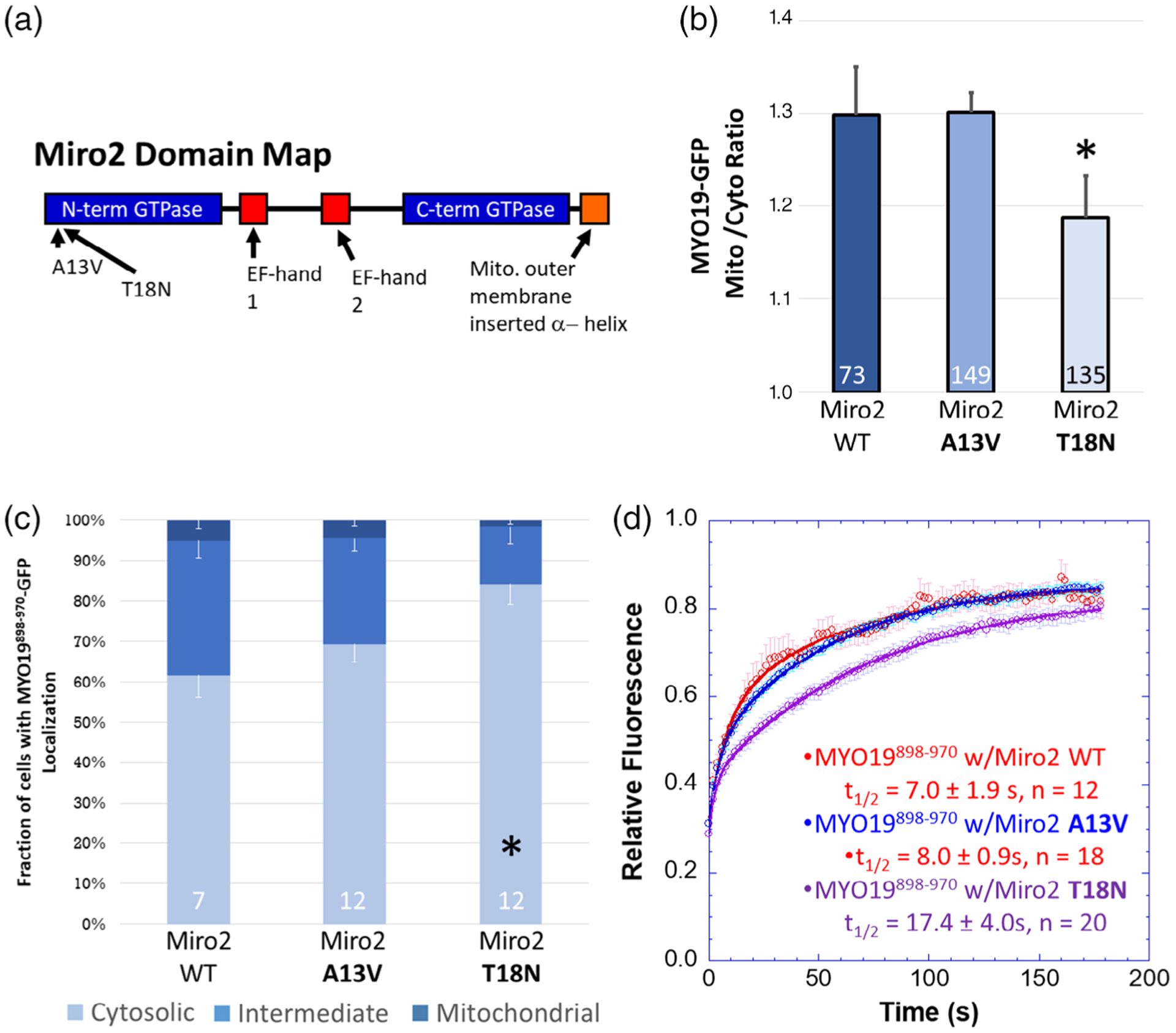FIGURE 4.

Miro2-dependent localization of MYO19898–970 may depend on the nucleotide state of Miro2. (a) Point mutations made to the N-terminal domain of Miro2 are thought to result in the GTPase being in the GTP-bound (A13V) or GDP-bound (T18N) state. (b) Expressing the putative GDP-bound mchr-Miro2 T18N mutant decreased the localization of MYO19898–970-GFP to mitochondria while the putative GTP-bound A13V mutant did not, as determined by the mito/cyto ratio (*p < 0.05, Dunnett’s test vs. MYO19898–970-GFP coexpressed with mchr-Miro2 wild type). (c) Expression of mchr-Miro2 T18N increased the fraction of cells displaying a cytosolic staining pattern for GFP (*p < 0.05, Dunnett’s test vs. MYO19898–970-GFP coexpressed with mchr-Miro2 wild type). (d) FRAP analysis of MYO19898–970-GFP with wild type or GTP-state mutants shows similar exchange kinetics of MYO19898–970-GFP for all three conditions. For the mchr-Miro2 T18N, this is likely due to endogenous Miro recruiting MYO19898–970-GFP. Numbers at the base of the bars indicate the number of replicates. Error bars represent SEM. FRAP kinetic parameters are listed in Table 1
